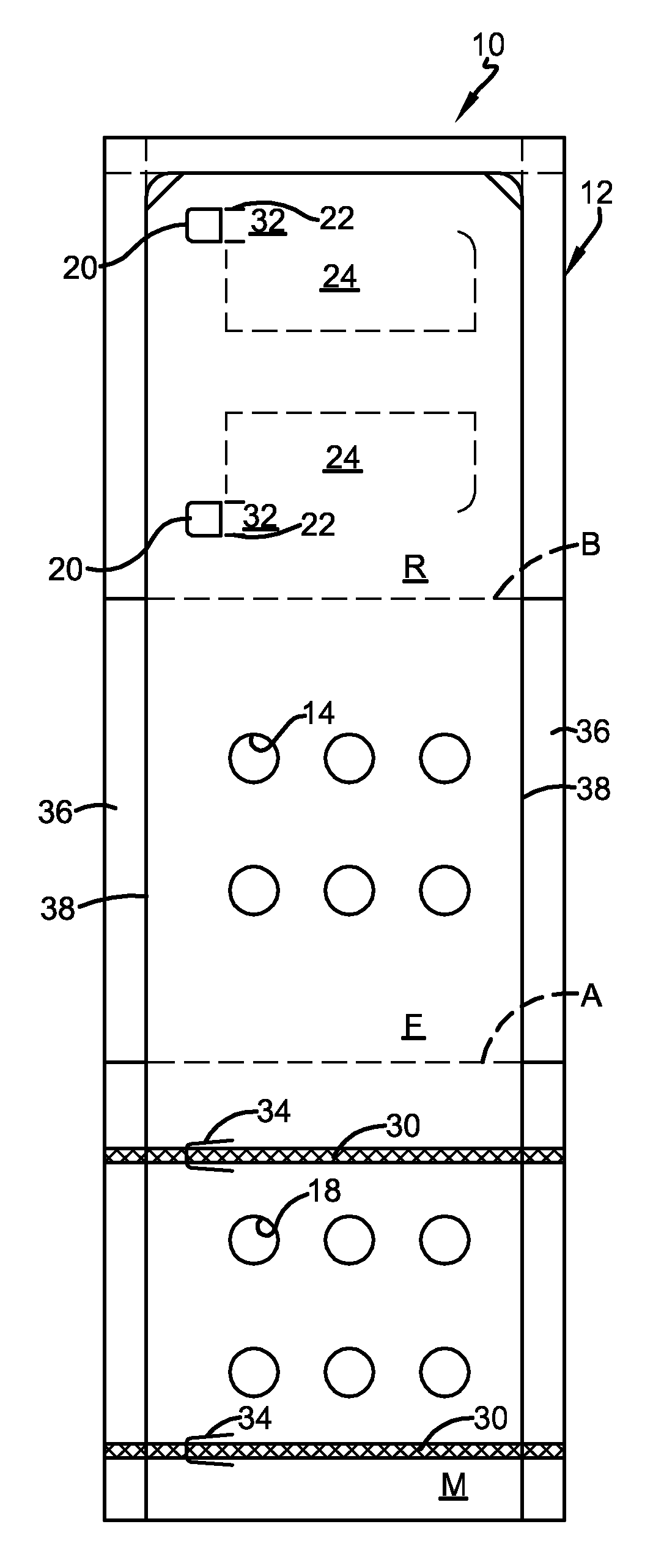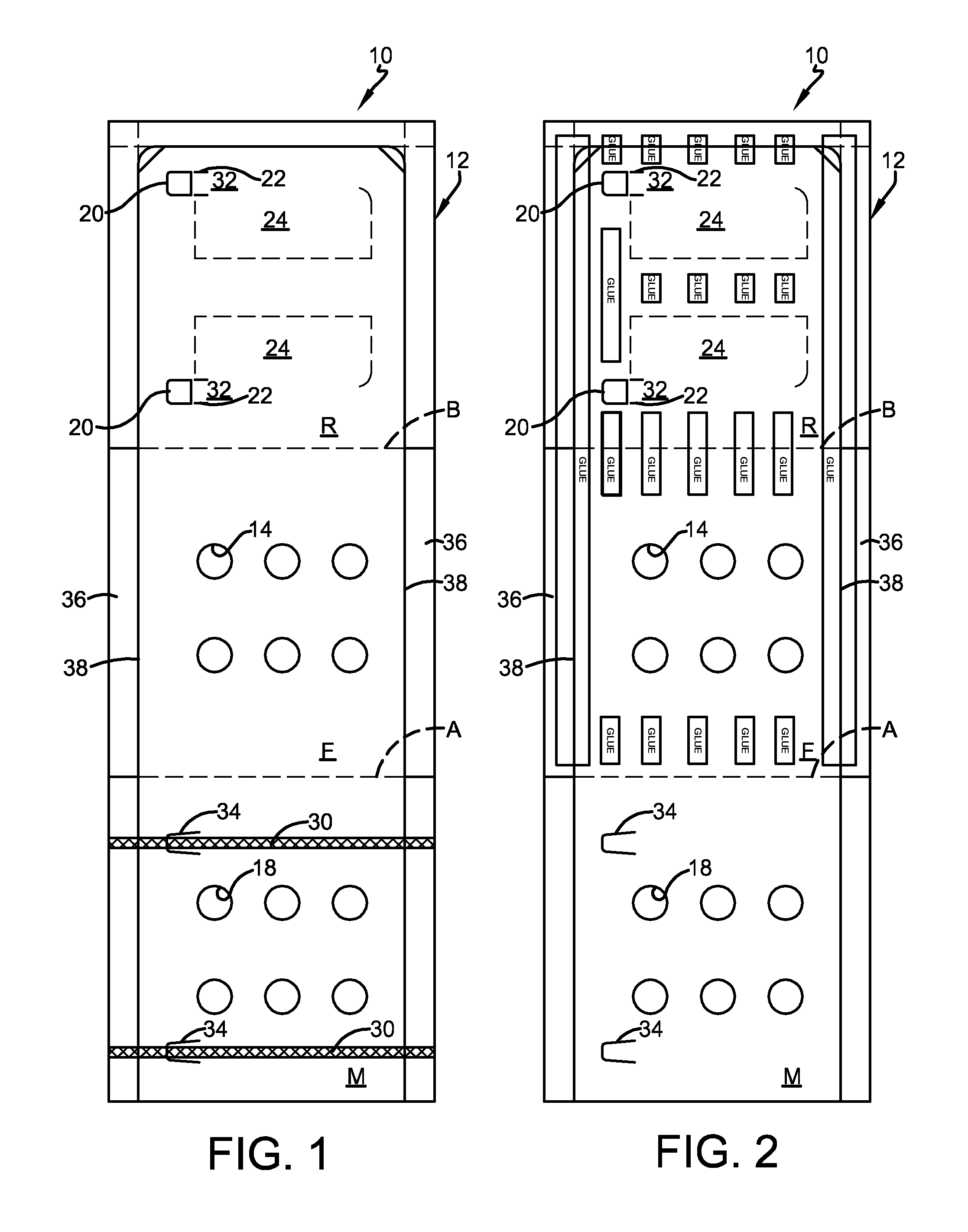Pharmaceutical blister card package
a technology for pharmaceuticals and blister cards, applied in the direction of packaging goods, transportation and packaging, tray containers, etc., can solve the problems of unsatisfactory high cost and undesirable lack of consistency, unfavorable material availability, label management, cost, etc., and achieve the effect of avoiding the occurrence of abrasion, avoiding abrasion, and avoiding abrasion
- Summary
- Abstract
- Description
- Claims
- Application Information
AI Technical Summary
Benefits of technology
Problems solved by technology
Method used
Image
Examples
Embodiment Construction
The preferred embodiment of the invention, illustrative of the best mode in which applicants have contemplated applying the principles of the invention, is set forth in the following description and is shown in the drawings.
FIG. 1 is a plan view of the front side of an exemplary embodiment of a pharmaceutical blister card package of the present invention, after cutting of the paperboard and before the application of adhesive and formed blister.
FIG. 2 is a plan view of the back or rear side of the embodiment of the invention shown in FIG. 1, after the application of adhesive.
FIG. 3 is a photograph of the front panel of the embodiment of the invention shown in FIG. 2, after assembly and folding
FIG. 4 is a photograph of the rear panel of the embodiment of the invention shown in FIG. 3.
Similar numerals refer to similar parts throughout the drawings.
Turning now to the drawings of the present invention, wherein the illustrations are for showing preferred embodiments of the invention, and...
PUM
| Property | Measurement | Unit |
|---|---|---|
| perimeter | aaaaa | aaaaa |
| size | aaaaa | aaaaa |
| area | aaaaa | aaaaa |
Abstract
Description
Claims
Application Information
 Login to View More
Login to View More - R&D
- Intellectual Property
- Life Sciences
- Materials
- Tech Scout
- Unparalleled Data Quality
- Higher Quality Content
- 60% Fewer Hallucinations
Browse by: Latest US Patents, China's latest patents, Technical Efficacy Thesaurus, Application Domain, Technology Topic, Popular Technical Reports.
© 2025 PatSnap. All rights reserved.Legal|Privacy policy|Modern Slavery Act Transparency Statement|Sitemap|About US| Contact US: help@patsnap.com



